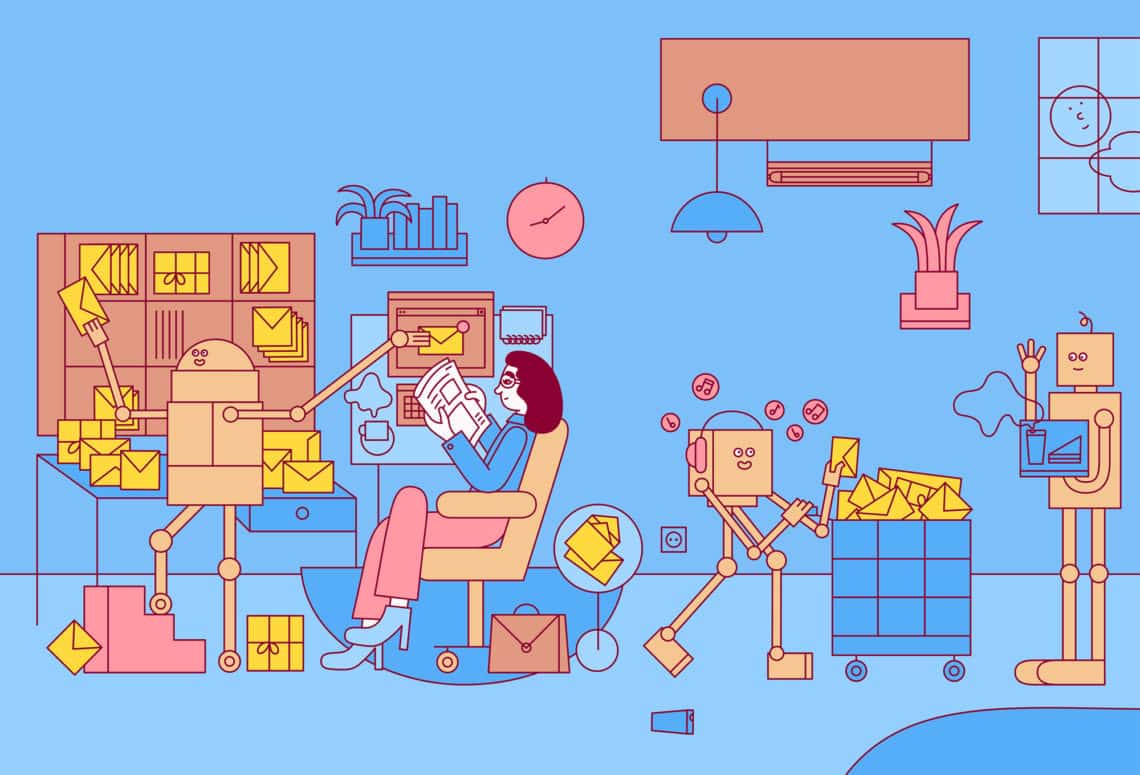
Image via Martina Paukova
What does a concept artist do?
Concept artists are artists who work on the creative visual graphic design process across the entertainment industry. In essence, their job is to create the artwork that defines the look and feel of different entertainment projects – primarily, video games, animation, movies, board games, etc.
They are in charge of designing characters, the environment, theme and various props associated with the storyboard of a project like a video-game design. They work with 3D artists and graphic designers to design the final look and feel of a project.
In this respect, they are more like product designers rather than traditional gallery artists. Unlike gallery artists, concept artists are employed by companies like Disney, Pixar, Activision, Ubisoft and they design their artwork according to a strict set of guidelines. These guidelines are defined by the ‘concept’ behind a game or video.
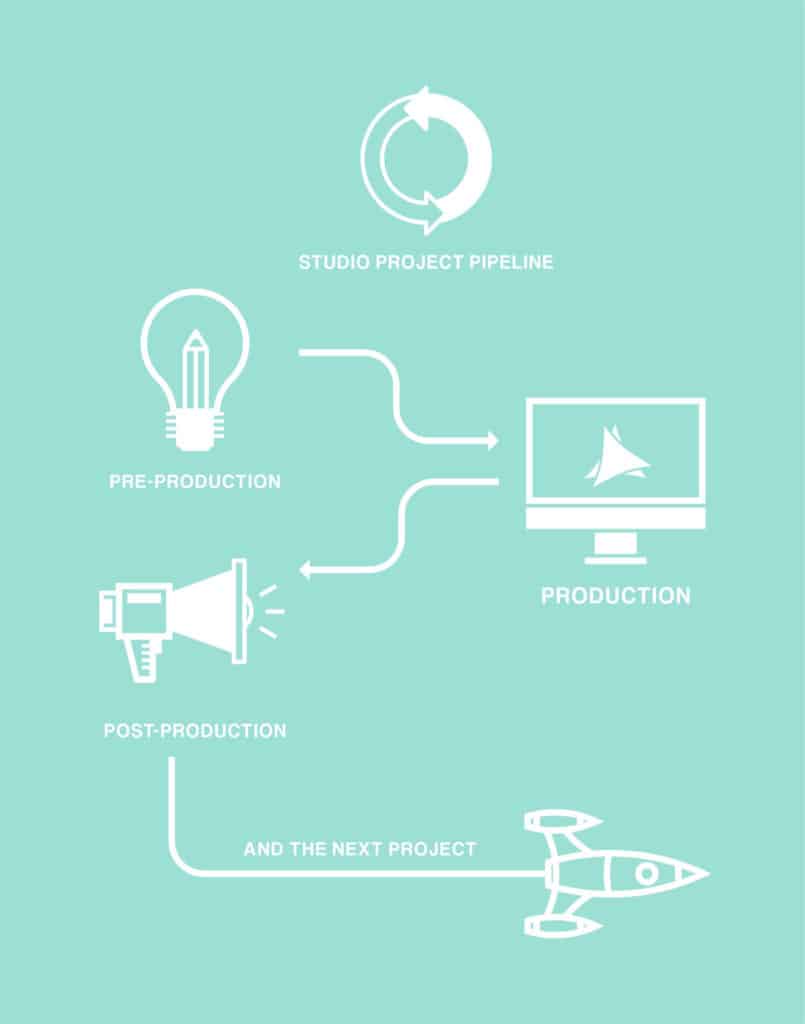
How Does a Concept Artist Work?
A concept artist takes an original idea or a theme and uses their creativity to bring it to life as per the requirements of the project. These art designs are intended to fit into the story’s narrative and prevailing theme.
For example within a video game, concept artists are responsible for creating the look of characters, the playing environment, weapons the characters may wield or cars and animals the characters may ride on.
However, concept artists are only in charge of the preliminary stages of design – that is they design the ‘first look’ of a product. Based on their drawings and designs, the art director works with the creative directors and graphic design heads to turn their drawings into a playable video-game environment. This is how the whole process unfolds.
Step One | The Briefing Process
Here, the concept artists are furnished with the bare essential details behind a project. Be it vehicles, flying beasts or an alien environment, the concept artist is entrusted to deliver an initial look of the design.
In certain cases, for example, racing games, concept artists base their work on real-life examples or photographs of models which exist in real life. In other cases, like animation, they have to start from scratch and use their creativity to design the whole thing.
Step Two | Thumbnail design
Based on the details given to the concept artist in the briefing, he will start designing thumbnails. These thumbnails are by no means, the final product – they are just a stepping stone to work on.
Because an experienced concept artist is able to sketch out a thumbnail fairly quickly, it’s not uncommon to see more than 50 thumbnails designs floated for a single character or a single animal. The thumbnails once made are handed over to the art director.
Step Three | Sketching
The concept artist at this point works in conjunction with the art director to decide on a particular thumbnail to go forward with. They may even choose multiple final designs. Once they have settled on a particular thumbnail, they sketch out a larger portrait of the character.
Here, they enhance and emphasize details of the character’s appearance like his clothing, his facial expressions, etc. If there is a mythical creature or beast being designed, details are added to make the beast look more appealing like wings, claws, scars, canines, etc.
Often, multiple portraits are made of a single character – side profile, front profile, a shot of the character in his environment. All of these designs are intended to help the graphic designers recreate the model from scratch.
Step Four | Color Testing
Up until now, most designs are just done in black and white. In the final stage, colors are added to the character befitting the theme and mood of the game’s storyline. Again, multiple color themes are proposed until the art director decides on which is best.
The best is usually a combination of the most attractive clothing and the most appropriate for the period in which the game is set. Plenty of games like League of Legends continually develop new ‘skins’ and overalls for their characters which are available as in-game purchases. Hence these companies always keep character designer concept artists on their payroll.
Plenty of companies have their own methods and pipelines with the above steps usually overlapping, but this is the basic series of steps most companies follow.
What are the different types of concept artists?
Concept art usually encapsulates several sub-sections which primarily include character design, environment design and prop design. Props design itself has several sub-sections like vehicle design, weapons design, etc.
It’s very rare to find someone who’s an expert in all these fields. Instead, artists generally focus on an area of expertise and seek to continuously develop their skills in that field.
-
Character Designers
Character designers are the most popular designers in the entertainment world and thus there is also an insane amount of competition. They are tasked with bringing a character to life, creating a visual representation of the characters based on the brief they were given.
The best character designers usually have an in-depth understanding of human and animal anatomy and they can leverage that knowledge to always maintain perfect proportions of body parts, even if they’re creating a non-human character like aliens, or orcs or mutants, etc. The ability to create life-like nonexistent creatures is paramount to a good character designer.
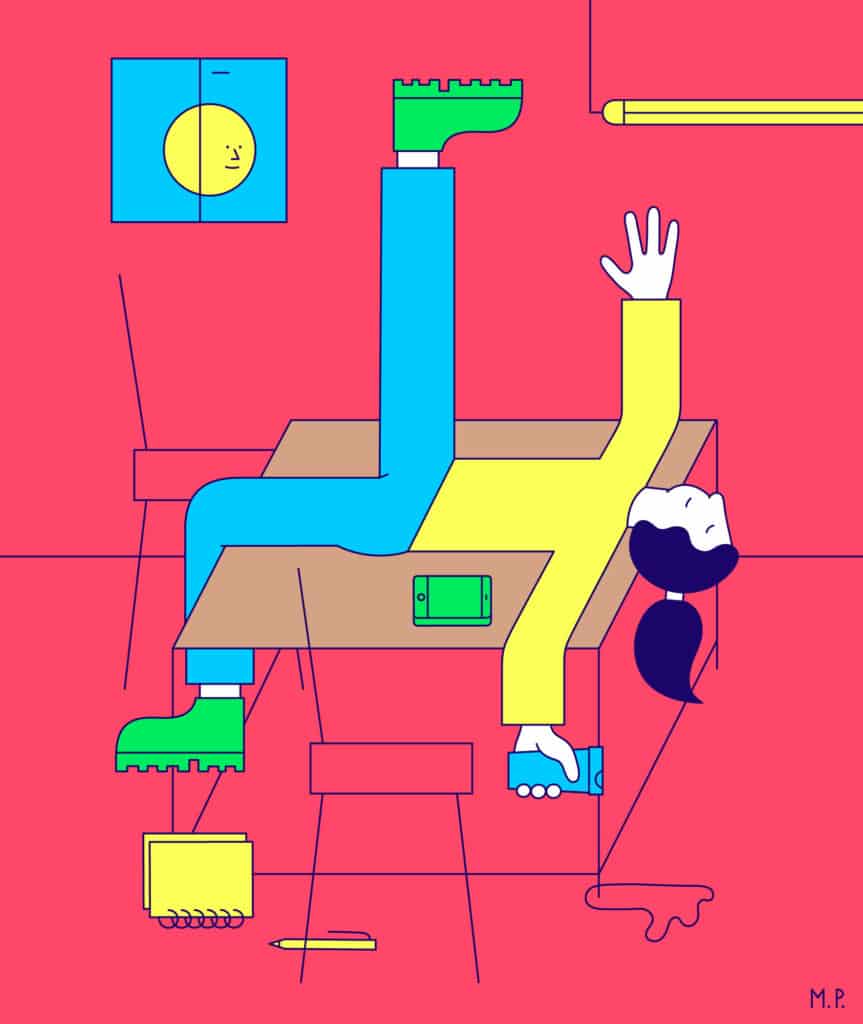
Image via Martina Paukova
There are artists who can both draw 2D sketches or use 3D rendering software to create entire 3D models. Knowledge of 3D animation goes a long way as these characters have to look natural and realistic in battles and interactions with other characters. The best character designers know how to inculcate personality traits into the look and demeanor of a character.
As far as animation goes, it’s a little easier as the frames themselves are 2D, basically making their projects a series of images in quick succession, which shows a character’s movements, speech, etc. Remember, animation has been around far longer than computers – the earliest cartoons were made from hand-drawn sketches back in the 1920s.
For an aspiring character art designer, there are plenty of places to learn – there are art schools, design schools and best of all a huge online community with tons of resources on every little aspect of character design.
-
Environment Designers
Environment design is often considered the hardest form of concept art, simply because of the scale in which it is done. Whereas a character designer will have strict guidelines and is limited in its scope, environment design is quite literally, boundless.
A single game might have several different environments in it, from a dusty, desert wasteland, to a frozen, frigid Winterland to a calm and tranquil forest or seascape. Environments can also often be indoors like football stadiums, mansions or cities of the future.
The amount of detail to be included in these environments is staggering. As a result, an environment designer will have expert knowledge of streams like architectural design, geology, natural landscapes and most important, depth perception.
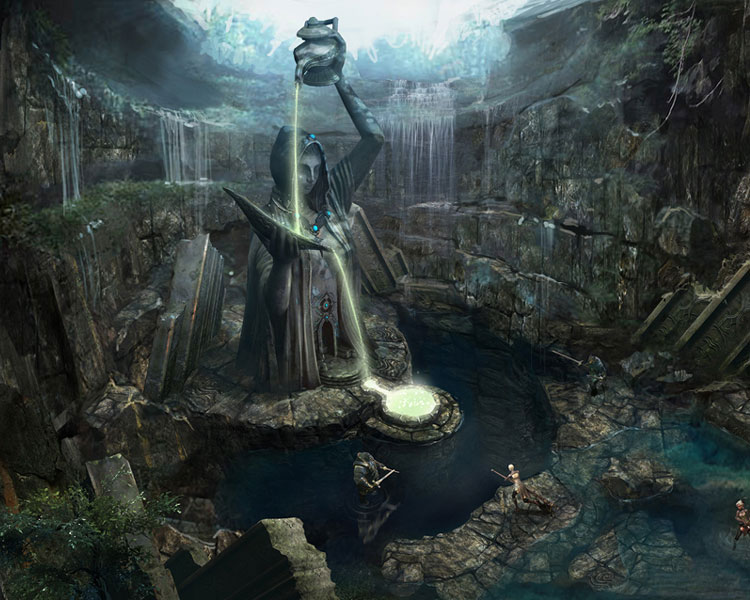
Image via fantasyinspiration.com
Perspective is most important in these drawings, as everything in the environment has to fit in place and be in sync with other elements of the environment. For example, a forest will not only have grassy terrain, but it will also have birds, flowers, trees, weather patterns, etc. Now imagine this is a forest in outer space or a forest that has grown in a city in a post-apocalyptic future.
Most environment artists have very little real-world inspiration to draw from. Instead, they are creating a new world entirely and then populating that world with environmental elements. However, period pieces like WW 2 games often have historical precedents and are easier to conceptualize.
The environment concept artists behind franchises like Star Wars, Blade Runner have gone on to find international acclaim.
-
Prop Designers
Prop designers put the final pieces in into a believable environment and playable characters. Their jobs often overlap with environment designers as they are responsible for creating props like TVs, stoves and lamps, etc of a particular environment.
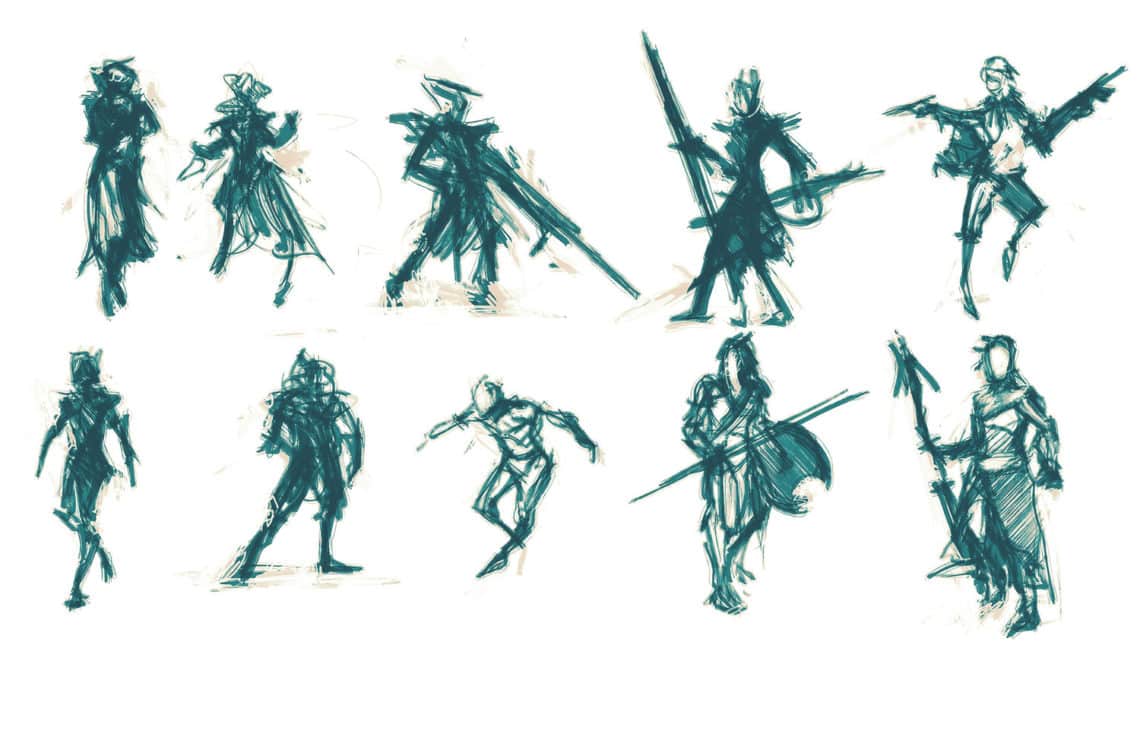
Image via bennettdurfee.com
Where the environment artist is focussed on the bigger picture, a prop designer will do in-depth research of the technology of the time and try to come up with a realistic reproduction. The best games have extremely accurate props. For example, the War in Iraq will have props entirely different from the kind of weapons used in the Vietnam War or WW2.
On that note, prop designers are usually segmented into two other types – weapon designers and vehicle designers.
-
Weapon Design
Weapons are immensely detailed and historically accurate in the best games. Players usually have the option to get an in-depth view of their weapon and then accessorize it with combat enhancing tools – for example, a rifle can be fitted with a silencer, a scope, lasers, grenade launchers, etc.
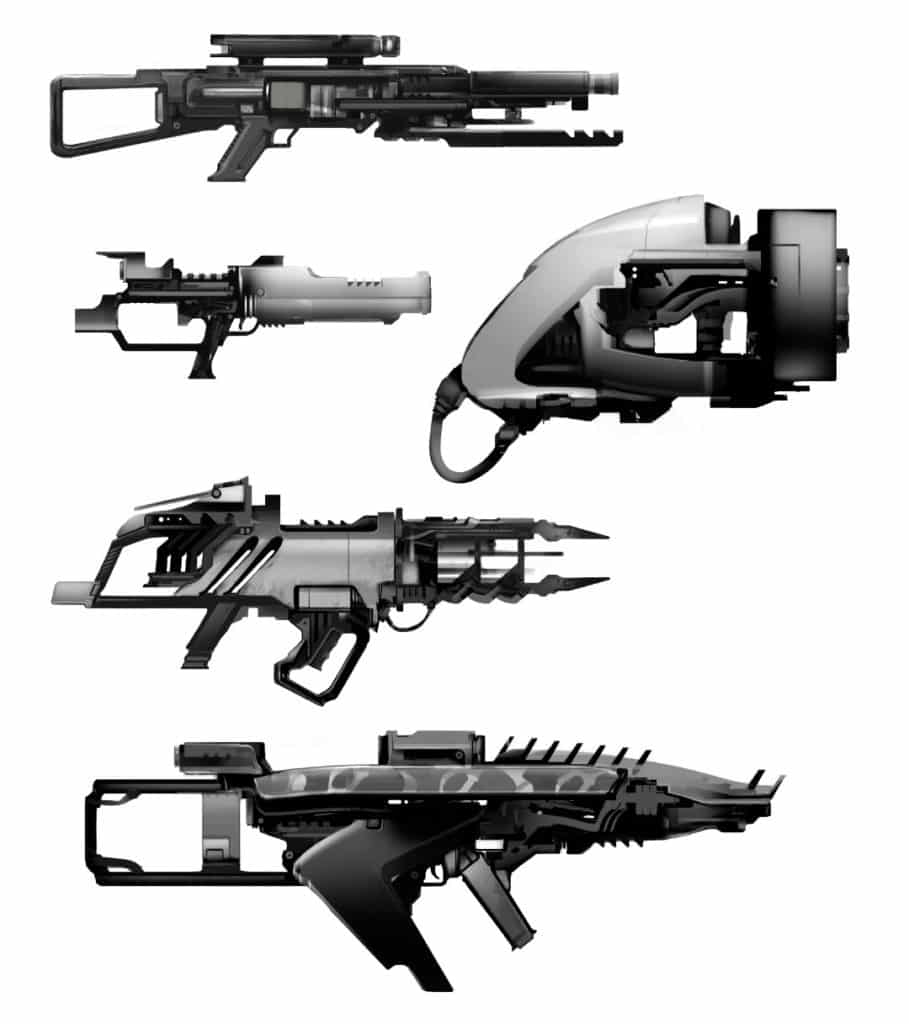
Image via alexmonge.com
Every single detail about the weapon from the bullet caliber used to the amount of recoil has to be painstakingly detailed by a weapon designer. All of this requires incredible research, including trips to museums and purchasing old weapon guides. A musket gun will be radically different from an AK-47, but the design should be absolutely immaculate.
It gets even more complicated when the weapons don’t exist in real life, for example, games that take place in outer space and include weapons like plasma lasers, nuclear rocket launchers, and all sorts of melee weapons. Games that focus on gore, also need to have weapons designed which look gory and instill a sense of violence, for example, rotating blades, etc.
-
Vehicle Design
A vehicle design expert usually has a lot of knowledge about the automobile industry along with every part that goes into the making of a car. They can draw the inside of a car just as easily as the outside.
Modern racing games have an exact reproduction of cars that are or were in the market and the unique skills and attributes every vehicle possesses. It’s not just cars though, as most open-world games also have airplanes, helicopters, tanks, submarines, and boats.
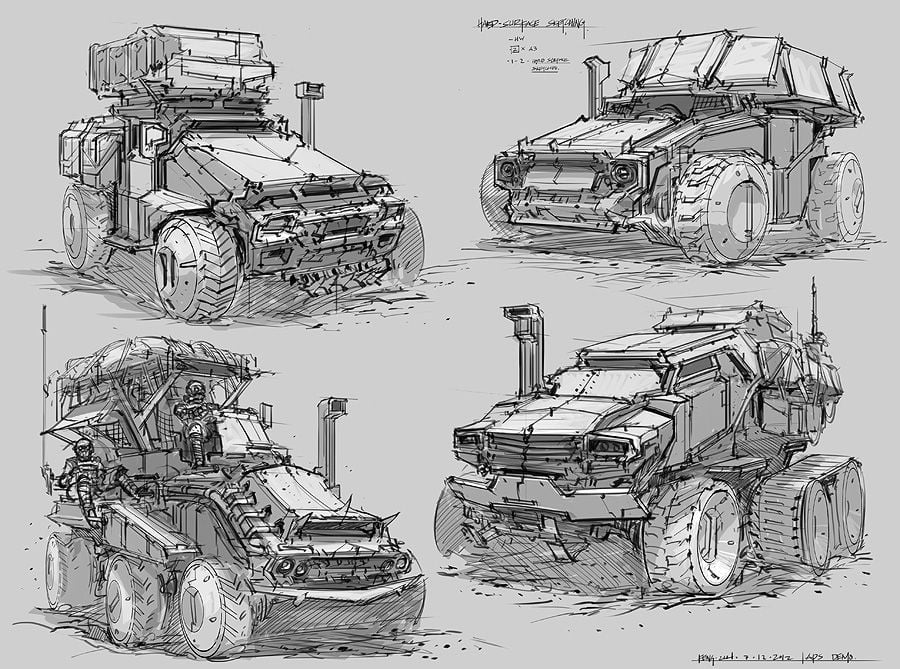
Image via pinterest.es
Other games include imaginary vehicles such as flying spaceships, rockets or the ability to ride and maneuver prehistoric creatures like mammoths and saber-tooth tigers.
Plenty of prop designers usually start off as other concept artists, but then slowly develop a particular area of expertise and then stick with it.
Creative and art directors usually have a good eye for every facet of the concept design and artwork and are able to guide, monitor and bring together all the aspects of concept art design. The environment itself will include all the characters that have been designed who in turn will use the vehicles, weapons and other props. In order to properly emulate the proposed look and atmosphere of a video game or a movie, all these elements need to merge together into a cohesive whole.
The art directors will also often work in tandem with graphic designers and 3D model renderers to ensure their vision gets replicated in the final product. There is usually a lot of back-and-forth between the artwork design team and the graphic design team.
Conclusion
Concept art design is nothing new and has been around since the beginning of the entertainment industry. Even before the spread of digital media, concept artwork found its place in illustrations in novels and creating set-pieces for dramas and plays.
However, with the explosion of the video game and CGI-industry, there is an unprecedented need for experienced, skilled and creative concept artists. Companies are constantly competing against one another and even against products released previously by the same company. With the multitude of gaming platforms, production houses and streaming platforms, this industry is poised to keep growing and employ plenty more concept artists in the future.
Featured Image via Martina Paukova

